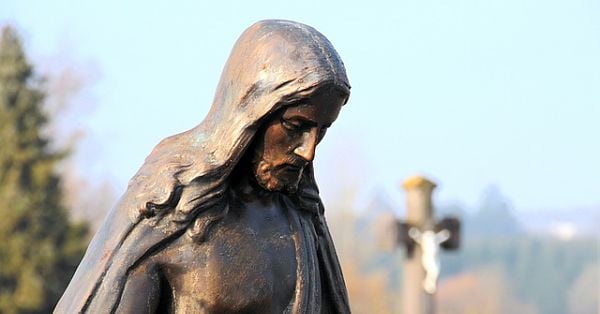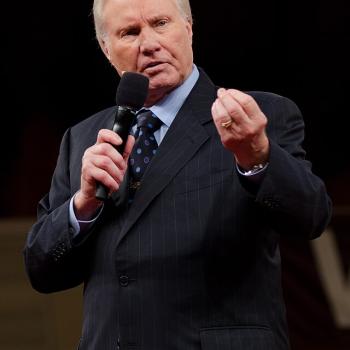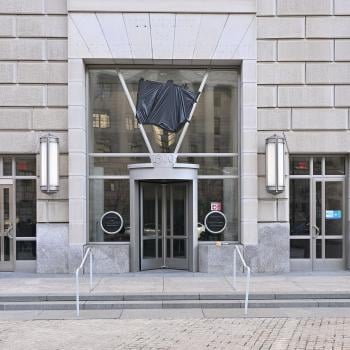Kenotic Christology Explained and Defended
Throughout my career as student and professor of theology I have often talked and written about “kenotic Christology.” I have read many books about the subject, had conversations with theological proponents and opponents of it, and sought to explain it to students—both in academic and ecclesiastical settings.
In brief, kenotic Christology is the idea that the Son of God, God the Son, the Word/Logos, voluntarily decided to “set aside” (or retract) his attributes of glory and power in becoming incarnate as the boy and man Jesus Christ and function throughout his life on earth as a human being, not using his attributes of glory and power or even knowing about them except through revelation from his heavenly Father and the Holy Spirit.
This theologoumenon (theological proposal, not dogma) seems always to have had some defenders, but it was first fully expounded by German theologian Gottfried Thomasius in the mid-19th century. Thomasius is generally considered a “mediating theologian”—one of those like I. A. Dorner who attempted to find a via media between Schleiermacher and Hegel or between the budding liberal theology and orthodoxy. After Thomasius kenotic Christology found expositors and defenders mainly in Great Britain: P. T. Forsyth, H. R. Mackintosh, Charles Gore and others. It found some expositors and defenders in America such as Southern Baptist theologian Fisher Humphreys. The best monograph on the subject is The Form of a Servant by Donald G. Dawe.
But kenotic Christology has its detractors. Dorner opposed it and proposed as its alternative “progressive incarnation.” Scottish theologian Donald M. Baillie opposed it and proposed as its alternative “the paradox of grace”—similar in structure to Dorner’s semi-Nestorian Christology. (Baillie’s Christology book is entitled God Was In Christ.) Several American conservative theologians have implied that kenotic Christology is a heresy. In my opinion, most of them have not understood it correctly.)
*Sidebar: The opinions expressed here are my own (or those of the guest writer); I do not speak for any other person, group or organization; nor do I imply that the opinions expressed here reflect those of any other person, group or organization unless I say so specifically. Before commenting read the entire post and the “Note to commenters” at its end.*
Kenotic Christology does not say that the Son of God, God the Son, the Word/Logos stopped being divine in the incarnation. That is a total misunderstanding of kenotic Christology. Rather, building on several New Testament passages such as Philippians 2:7-8 and Luke 2:52 and Mark 13:32, kenotic theologians believe and teach that the Son of God voluntarily restricted the use and knowledge of his attributes of glory and power such as omniscience, omnipotence and omnipresence in order to experience human existence.
I find that most people need analogies, illustrations, to help them understand theological concepts. For example, some of the ancient church fathers used the analogy of the sun for the Trinity—the sun itself, its light, and its heat. All are the same substance but are also distinct. (This particular illustration was and is favored by those who believe in the monarchy of the Father and who reject the filioque clause in the Nicene Creed.)
So what illustration do I use in teaching kenotic Christology? Simply sleep. When a person goes to sleep, he or she remains the same person and has the same abilities (as when awake) but he or she undergoes an alteration of consciousness and power. During REM sleep, for example, a person is paralyzed. He or she cannot move. This is painfully known by those who experience sleep paralysis—waking up during REM sleep and being temporarily unable to move a muscle. Yet, even as the person is asleep, he or she is still the same person—only in an altered state of consciousness that affects his or her knowledge and power.
This illustration takes in and absorbs the main alternative to kenotic Christology—the so-called “two minds theory”—which says that Jesus Christ, the God-man, God incarnate, both truly human and truly divine, had two minds—a divine mind and a human mind. (The best book expounding and defending this view is The Logic of God Incarnate by Thomas V. Morris.)
My sleep analogy avoids the clearly implied Nestorianism of the two minds theory. The two minds theory says that Jesus was able to switch between being omniscient and having limited knowledge and also between being weak and being almighty. That at least borders on Nestorianism. The sleep analogy agrees that Jesus had two states of consciousness, but it says that one was dormant during his earthly life; it was asleep, as it were.
There are people who have a particular sleep disorder (often associated with narcolepsy) in which they are sometimes both asleep and awake at the same time. They might have “lucid dreaming” or they might dream as they are falling asleep or waking up and know that they are dreaming. This is not my illustration of kenotic Christology; it is only to make the point that many people have “two minds” in this sense. My sleep illustration for kenotic Christology points out that even when a person is fully asleep, he or she has two minds—but one is asleep. The other one is the same mind in its awake state. But in my illustration they are not simultaneous. And the sleeping state of mind cannot control the awake state of mind.
The main point is not to push the illustration too far but to “see” that a sleeping person is still the same person possessed of the same knowledge and powers even if that knowledge and those powers are dormant.
So what is the advantage of kenotic Christology? First, it’s only useful insofar as a person accepts the hypostatic union doctrine of Christology (Chalcedonian Christology). That doctrine raises some questions about Jesus’s humanity in light of his true deity. How did he “grow” in wisdom? How was he tempted? How did he not know the day or hour of the Son of Man’s return? How did he empty himself and take on the form of a servant? How as his humanity not a charade? How was he still truly God, truly divine, equal with the Father and the Holy Spirit, while he was not omniscient or omnipotent or omnipresent?
He (the Son of God) did not “divest” himself of those attributes of glory and power but retracted them—from activity into dormancy—just like a person voluntarily falls asleep.
Critics of kenotic Christology routinely misrepresent it—as the Son of God “giving up his deity” for the sake of experiencing human life. So far as I know, no orthodox (believing in the hypostatic union) theologian has ever said that. Nor do we who believe in kenotic Christology think or say that.
*Note to commenters: This blog is not a discussion board; please respond with a question or comment only to me. If you do not share my evangelical Christian perspective (very broadly defined), feel free to ask a question for clarification, but know that this is not a space for debating incommensurate perspectives/worldviews. In any case, know that there is no guarantee that your question or comment will be posted by the moderator or answered by the writer. If you hope for your question or comment to appear here and be answered or responded to, make sure it is civil, respectful, and “on topic.” Do not comment if you have not read the entire post and do not misrepresent what it says. Keep any comment (including questions) to minimal length; do not post essays, sermons or testimonies here. Do not post links to internet sites here. This is a space for expressions of the blogger’s (or guest writers’) opinions and constructive dialogue among evangelical Christians (very broadly defined).













